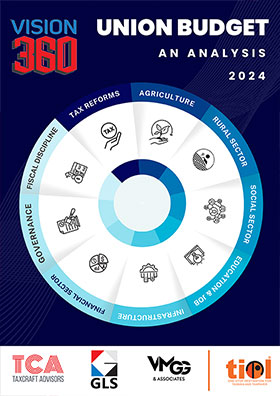- EFFECTIVE UTGST (RATES) NOTIFICATIONS
- IGST (Rates) Notification
- UTGST Circular
- UTGST (Rules) Notification
- SGST Circular
- Cess Circulars
- Compensation Cess (Rules) Notification
- Compensation Cess (Rates) Notification
- CGST (Rates) Notification (Effective)
- CGST (Rules) Notification (Effective)
- CGST (Rates) Notification
- IGST Circulars
- IGST (Rules) Notification
- CGST Circular
- CGST (Rules) Notification
|
F. No.134/11/2015-TPL Dated: May 21, 2015 Sub: - Draft scheme of the proposed rules for computation of Arm’s Length Price (ALP) of an International Transaction or Specified Domestic Transaction undertaken on or after 01.04.2014. Section 92C of the Income Tax Act, 1961 (the "Act") provides for computation of Arm's Length Price (ALP) of an international transaction or specified domestic transaction. 2. The Finance Minister in his Budget speech, while introducing the Finance (No. 2) Bill 2014, had made an announcement that "range concept" for determination of ALP would be introduced in the Indian transfer pricing regime however, the arithmetic mean concept will continue to apply where the number of comparables is inadequate. Further, it was announced that use of multiple year data would be permitted for undertaking comparability analysis. Consequent to the announcement, section 92C (2) of the Act was amended by the Finance (No. 2) Act, 2015 to provide that where more than one price is determined by application of the most appropriate method, the arm's length price in relation to an international transaction or specified domestic transaction undertaken on or after the 1st day of April, 2014 shall be computed in such manner as may be prescribed. 3. Therefore, the manner of computation of ALP is proposed to be provided through the amendment of Income-tax Rules. The proposed mechanism and conditions under which the multiple year data and 'range' concept would be used for determination of ALP shall be as under: - A. Adoption of the Range Concept
B. Use of Multiple Year Data
C. Continued use of Arithmetic Mean In cases where 'range' concept does not apply, the arithmetic mean concept shall continue to apply in the same manner as it applied before the amendment to section 92C (2) by the Finance (No. 2) Act 2014 alongwith benefit of tolerance range. Further, in cases where multiple year data is to be used, the same would apply whether "range" concept is used or arithmetic mean is used for determining the ALP. Therefore, in such cases the arithmetic mean of the multiple year data of comparable will be considered for computation of ALP. 4. The comments and suggestion of stakeholders and general public on the above draft scheme are invited. The comments and suggestions may be submitted by 31st May, 2015 at the email address (dirtpl1@nic.in) or by post at the following address with "Comments on draft transfer pricing rules" written on the envelop: Director (Tax Policy & Legislation)-I |














